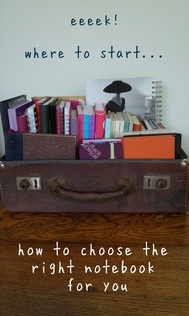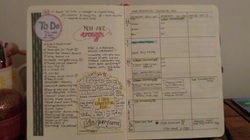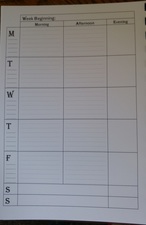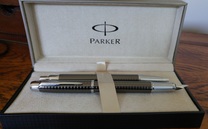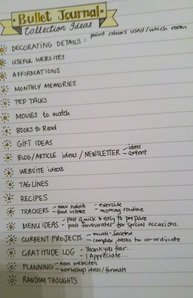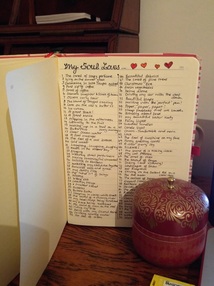|
Getting started is easy. You don't need anything fancy, and I would recommend you do a trial run with a cheapie from your local supermarket or $2 store. A5 size is probably best, but if you want to carry it around easily in your purse then A6 would work. The trick is to decide how you want to use your journal, and get a size that will meet your requirements. If you like to be neat and tidy, grid (squared) or dotted paper is handy, if you don't care or don't need that kind of guide then lined or blank is fine too. I've been using a both lined and blank and it suits me. Once you've found something to start with add an Index page in the front and then number every page thereafter. Next decide on a "key" that will work for you. I recommend using the standard bullet journal dot, circle, and dash - as part of the secret to the systems success lies in it's simplicity. As I have a tendency to over complicate things, I did create my own fancy code of $ for purchases, ! for ideas, ? for research etc - but at the end of the day they were still tasks, so I went back to basics and it works just fine!!
For more on getting started go to: |
|
One of the greatest attributes of the bullet journal system is it's flexibility. Ideally creating as you go keeps your journal continually responsive to your needs and therefore achieving long term sustainability. As our needs change, so then can the design of the page you use. This is difficult if a page is already pre-printed, and the likelihood of continuing to journal decreases. Historically, I have always had difficulty finding a diary/planner to suit me, so many years ago I started to make my own yearly planner. I started creating templates using "tables" in Word and have continued ever since. Suffice to say, no year has been the same, and while this has worked well for me it didn't have the flexibility nor versatility of the Bullet Journal. So while I was tempted to over plan my bullet journal, I knew it would defeat the purpose. During my 3 month trial, I completed everything by hand and observed what formats I continually repeated. Then when I created my own Bullet Journal commencing in April I knew what templates worked and would save me time, while not boxing myself into formats for other spreads (like To Do's) If you enjoy being creative in your journal and like to try different headings and banners - it is easier when starting with the blank page. As a result your journal takes on a life of it's own filled with expressions of you. This energy exchange is very therapeutic and leaves me feeling committed and connected to what I plan.
|
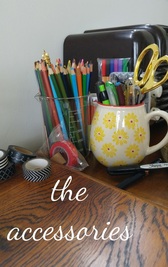
Essentials are a pen (and maybe a ruler) but, you can get as fancy as you like. Many bullet journalists favour particular pens such as "Sharpie" and "Staedtler" as they don't bleed through the paper or leave a ghosting effect on the reverse side. The quality of your journal paper will determine what pens work best, but there is a large variety of ink instruments available including fountain pens and many bullet journal sites on YouTube reviewing them. If you want to add a creative flavor to your journal, washi tape - a traditional japanese paper tape, is fun and easy to use. You can buy this in most craft stores or on line for minimal cost. Colouring in pencils can also add interest and colour, although these can rub off onto the opposite page if the quality isn't so good. Experiment and have fun. Try different looks and see what works best for you. There are many many examples of bullet journal spreads on Instagram and Pinterest - from plain and functional to highly decorative. If you haven't already set up an account, and want to get more ideas it is well worth it.
So, the last time I used a fountain pen was around forty five years ago, when we were actually taught handwriting!! I've not seen anyone use one in years, but got all inspired by some of the Instagrammers I follow. I'm really enjoying using my pen, and find a new pleasure in hand writing Thank you notes! |
